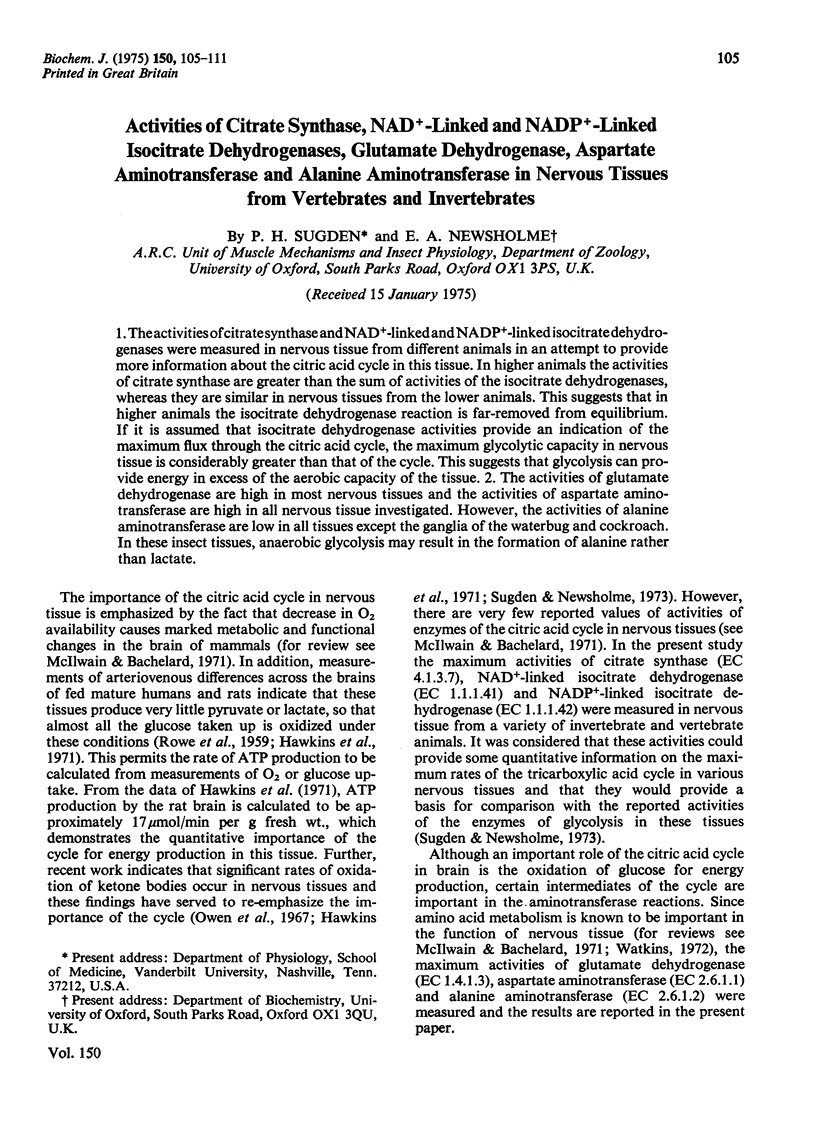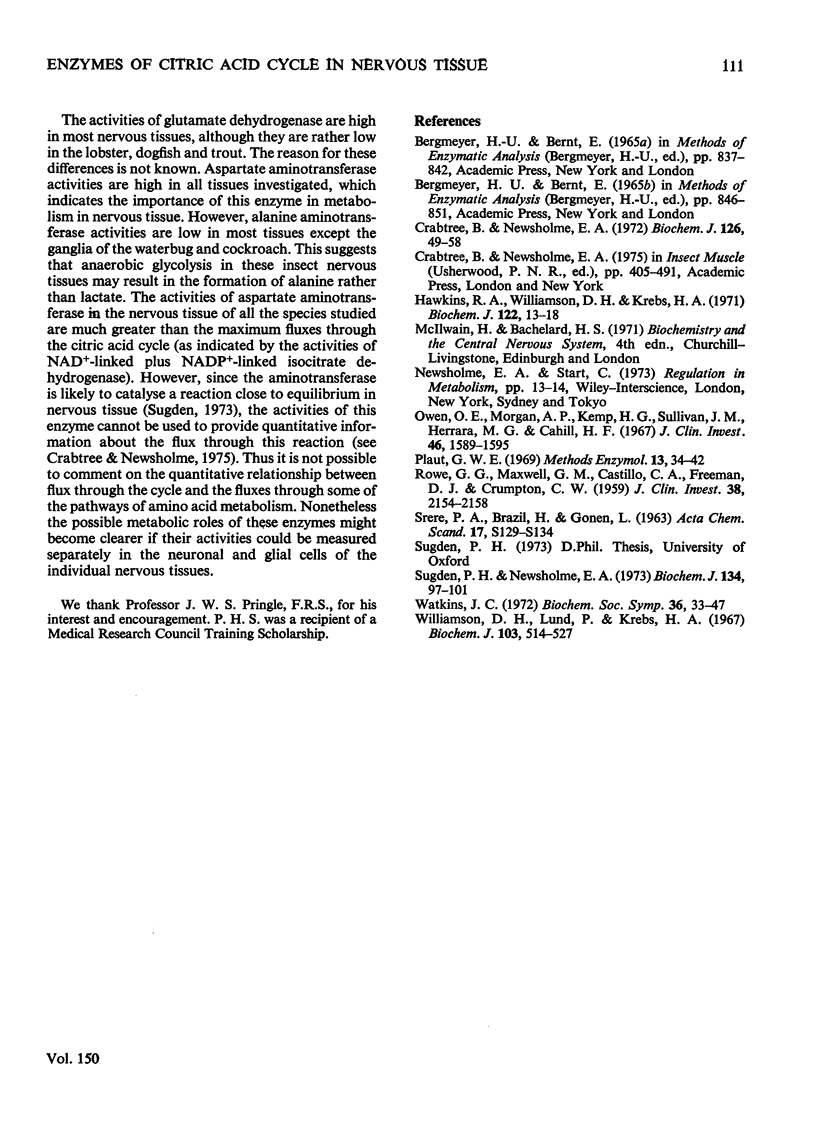Abstract
1. The activities of citrate synthase and NAD+-linked and NADP+-linked isocitrate dehydrogenases were measured in nervous tissue from different animals in an attempt to provide more information about the citric acid cycle in this tissue. In higher animals the activities of citrate synthase are greater than the sum of activities of the isocitrate dehydrogenases, whereas they are similar in nervous tissues from the lower animals. This suggests that in higher animals the isocitrate dehydrogenase reaction is far-removed from equilibrium. If it is assumed that isocitrate dehydrogenase activities provide an indication of the maximum flux through the citric acid cycle, the maximum glycolytic capacity in nervous tissue is considerably greater than that of the cycle. This suggest that glycolysis can provide energy in excess of the aerobic capacity of the tissue. 2. The activities of glutamate dehydrogenase are high in most nervous tissues and the activities of aspartate aminotransferase are high in all nervous tissue investigated. However, the activities of alanine aminotransferase are low in all tissues except the ganglia of the waterbug and cockroach. In these insect tissues, anaerobic glycolysis may result in the formation of alanine rather than lactate.
Full text
PDF






Selected References
These references are in PubMed. This may not be the complete list of references from this article.
- Crabtree B., Newsholme E. A. The activities of phosphorylase, hexokinase, phosphofructokinase, lactate dehydrogenase and the glycerol 3-phosphate dehydrogenases in muscles from vertebrates and invertebrates. Biochem J. 1972 Jan;126(1):49–58. doi: 10.1042/bj1260049. [DOI] [PMC free article] [PubMed] [Google Scholar]
- Hawkins R. A., Williamson D. H., Krebs H. A. Ketone-body utilization by adult and suckling rat brain in vivo. Biochem J. 1971 Mar;122(1):13–18. doi: 10.1042/bj1220013. [DOI] [PMC free article] [PubMed] [Google Scholar]
- Owen O. E., Morgan A. P., Kemp H. G., Sullivan J. M., Herrera M. G., Cahill G. F., Jr Brain metabolism during fasting. J Clin Invest. 1967 Oct;46(10):1589–1595. doi: 10.1172/JCI105650. [DOI] [PMC free article] [PubMed] [Google Scholar]
- ROWE G. G., MAXWELL G. M., CASTILLO C. A., FREEMAN D. J., CRUMPTON C. W. A study in man of cerebral blood flow and cerebral glucose, lactate and pyruvate metabolism before and after eating. J Clin Invest. 1959 Dec;38:2154–2158. doi: 10.1172/JCI103994. [DOI] [PMC free article] [PubMed] [Google Scholar]
- Sugden P. H., Newsholme E. A. Activities of hexokinase, phosphofructokinase, 3-oxo acid coenzyme A-transferase and acetoacetyl-coenzyme A thiolase in nervous tissue from vertebrates and invertebrates. Biochem J. 1973 May;134(1):97–101. doi: 10.1042/bj1340097. [DOI] [PMC free article] [PubMed] [Google Scholar]
- Watkins J. C. Metabolic regulation in the release and action of excitatory and inhibitory amino acids in the central nervous system. Biochem Soc Symp. 1972;(36):33–47. [PubMed] [Google Scholar]
- Williamson D. H., Lund P., Krebs H. A. The redox state of free nicotinamide-adenine dinucleotide in the cytoplasm and mitochondria of rat liver. Biochem J. 1967 May;103(2):514–527. doi: 10.1042/bj1030514. [DOI] [PMC free article] [PubMed] [Google Scholar]


